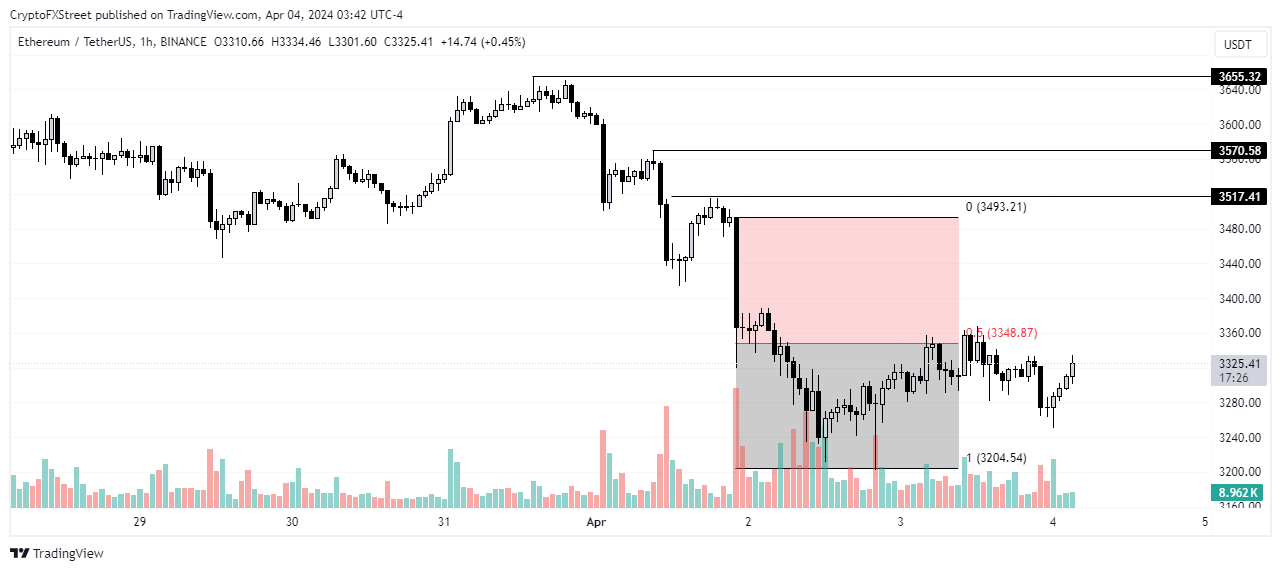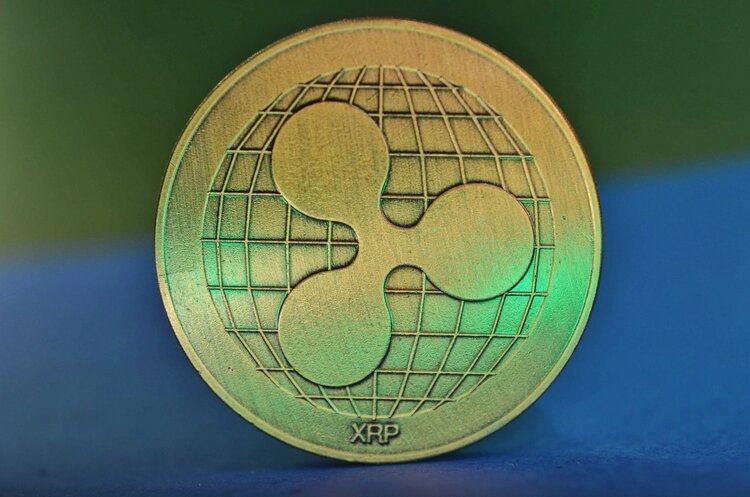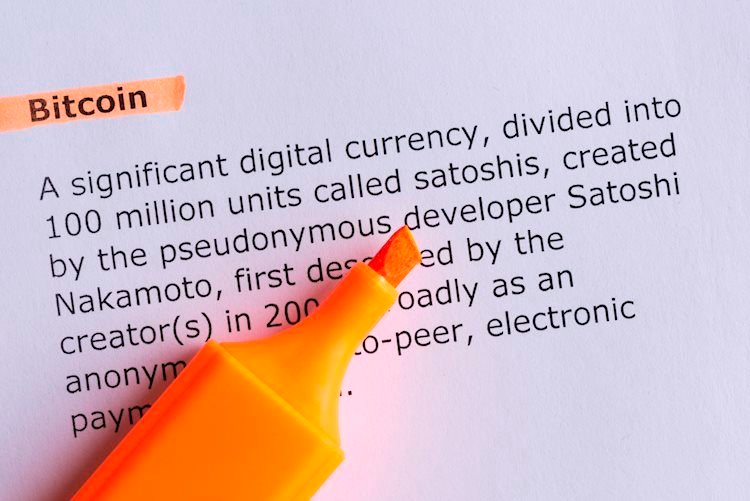- Ethereum’s network Q1 financial report shows that it tripled its earnings quarter-on-quarter to around $370 million.
- Bitcoiner argues about ETH’s security status as Bloomberg analyst James Seyffart labels it as a commodity.
- VanEck expects Ethereum Layer 2 chains to accrue more revenue than the main Ethereum chain by 2030.
Ethereum (ETH) sustained its consolidating movement for the second day on Thursday, trading above $3,300 after crashing earlier in the week. While this may signify indecisiveness among bulls and bears, its Q1 results show steady growth across various sectors even as community members debate on its commodity status.
Daily digest market movers: L2s, Q1 earnings, ETH commodity status
Ethereum has been one of the most trending cryptocurrencies in the past few weeks. Despite expectations that anticipation for Bitcoin’s halving would be the main subject of discussion, the SEC’s decision on Ethereum ETFs and the recent crackdown on Ethereum Foundation appears to have taken center stage in the crypto community. That said, here’s a quick breakdown of the latest happenings surrounding the largest altcoin:
- In a report released on Wednesday, global asset manager VanEck analysts expect Ethereum Layer 2 networks to accrue more revenue than its main chain. They sighted data from crypto analysis firm Artemis XYZ, showing the increasing growth of the underlying Ethereum ecosystem against its Mainnet declining market share. L2s offer superior throughput and user experience, especially with the Dencun upgrade on March 13, which introduced Blob space – a data layer for L2 that reduces data overhead and gas fees – noted VanEck analysts.
- The analysts further predicted that Ethereum L2s may be worth more than $1 trillion by 2030, considering several application, sector, or function-specific Layer 2s may emerge – like an asset management L2 or rollups that host a social media sector. They noted that these L2s reinforce “the value of ETH as the true ‘oil’ powering the entire ecosystem of connected chains.”
- Ethereum’s Q1 financial report, released on Wednesday by Coin98 Analytics, showed significant growth in revenue and earnings. Ethereum’s revenue grew nearly 84.6% quarter-on-quarter (QoQ) to reach $1.035 billion, and earnings reached $369.11 million, a 198.8% QoQ change. Much of this increase is attributed to the spike in gas fees before the Dencun upgrade. Other metrics from the report include 107 million transactions conducted with 9.7 million new addresses in Q1.
- Following ETH Q1 results was Cory Klippsten, CEO of Bitcoin financial service firm Swan.com, arguing in an X post on Wednesday that Ethereum was a security when it launched. He claimed the SEC didn’t want to get in the way of another agency when it allowed the CME to start trading ETH futures ETF.
However, Bloomberg analyst James Seyffart, who was tagged in the post, responded by stating that the ETH futures ETF was registered as “commodities futures, not securities futures.”
If the SEC wanted to come out and call Eth a security, they should not have approved the listing of #Ethereum futures ETFs which rely on these contracts. To go back and change that would likely mean the delisting and closing of CME ETH futures AND the ETH futures ETFs. Thus why…
— James Seyffart (@JSeyff) April 3, 2024
- James Seyffart also said in another X post that the SEC asking for public comments on spot Ethereum ETF filings is a normal procedure and “not ‘bullish’ in any capacity for Ethereum ETFs.”
Also read: Ethereum drops further as Bitcoin’s decline, uncertainty over ETF weigh
Technical analysis: Indecisiveness persists
Traders are exercising more caution as Ethereum’s price continues its horizontal move for a second consecutive day. This indicates reduced bullish sentiments for the largest altcoin.

ETH/USDT 1-hour chart
If Bitcoin’s price shows signs of recovery, ETH could resume an upward move to break past the $3,493 level, which is the high from April 2. . Further up, next resistances are at $3,517, $3,570, and $3,655, which also align with recent swing highs seen in the past few days.
However, this thesis would be invalidated if ETH moves below the $3,204 support level, the low from April 2.
The SEC’s decision on the May 23 deadline to respond to VanEck spot Ethereum ETF filings is expected to have a major effect on prices.
Bitcoin, altcoins, stablecoins FAQs
Bitcoin is the largest cryptocurrency by market capitalization, a virtual currency designed to serve as money. This form of payment cannot be controlled by any one person, group, or entity, which eliminates the need for third-party participation during financial transactions.
Altcoins are any cryptocurrency apart from Bitcoin, but some also regard Ethereum as a non-altcoin because it is from these two cryptocurrencies that forking happens. If this is true, then Litecoin is the first altcoin, forked from the Bitcoin protocol and, therefore, an “improved” version of it.
Stablecoins are cryptocurrencies designed to have a stable price, with their value backed by a reserve of the asset it represents. To achieve this, the value of any one stablecoin is pegged to a commodity or financial instrument, such as the US Dollar (USD), with its supply regulated by an algorithm or demand. The main goal of stablecoins is to provide an on/off-ramp for investors willing to trade and invest in cryptocurrencies. Stablecoins also allow investors to store value since cryptocurrencies, in general, are subject to volatility.
Bitcoin dominance is the ratio of Bitcoin’s market capitalization to the total market capitalization of all cryptocurrencies combined. It provides a clear picture of Bitcoin’s interest among investors. A high BTC dominance typically happens before and during a bull run, in which investors resort to investing in relatively stable and high market capitalization cryptocurrency like Bitcoin. A drop in BTC dominance usually means that investors are moving their capital and/or profits to altcoins in a quest for higher returns, which usually triggers an explosion of altcoin rallies.


























